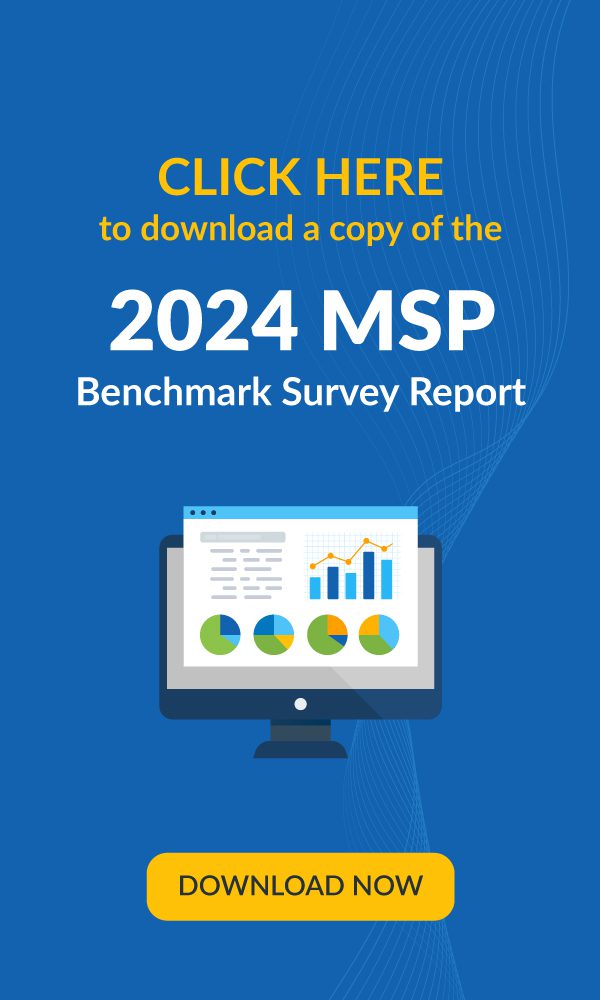A risk assessment is a process by which businesses identify risks and threats that may disrupt their continuity and halt operations. Although businesses are exposed to a variety of risks, not all of them are immediate or detrimental to continued operation. There are some risks that are more likely to materialize than others, and to identify, minimize and recover from them, businesses need a risk assessment framework. In this blog, we’ll examine the different aspects of IT risk assessment and explore why companies need to carry it out routinely.
What is an IT risk assessment?
IT risk assessment refers to the process of identifying and mitigating the risks and threats that can compromise a company’s IT infrastructure, network and database.
Globally, cybersecurity has emerged as one of the biggest challenges facing corporations, and discussions on how to prevent and defend against cyberthreats have been a focal point of MSPs and IT teams this year. Knowing which cyberthreats your business is most vulnerable to will help you improve your security setup, invest in the right tools and take preventative steps to stop a major breach or incident.
Nonetheless, IT risk assessment isn’t just confined to cybersecurity. Hardware or software failure, backup and recovery problems, physical damage to devices or any other factor that could negatively affect IT infrastructure and disrupt business operations is included in the IT risk assessment plan.
In a nutshell, an IT risk assessment involves examining all the IT assets of your company or customers to identify each one’s vulnerabilities and the threats most likely to harm them. It also involves assessing the potential loss or damage to the business should any of these assets be compromised, and developing a plan to mitigate or contain any threats should they occur.
What is the purpose of an IT risk assessment?
The risk profile of every company varies based on factors such as industry, location and database. Moreover, these factors also govern how organizations set up their IT infrastructure as well as the rules and compliance requirements that must be followed. IT risk assessments help companies not only protect themselves against cybercrime or other IT infrastructure-related failures, but also ensure compliance with government-mandated regulations.
IT risk assessments are designed to assist companies in identifying challenges in a systematic manner, so the right solution can be put in place.
Why is an IT risk assessment important?
The aim of an IT risk assessment plan is to identify weaknesses and loopholes in your company’s IT infrastructure so that you can take remedial measures to close them before they become a bigger issue or are exploited by internal or external threat actors.
You can collect a great deal of data about your IT assets and setup using the risk assessment process, which facilitates better decision-making and allows you to determine the appropriate IT budget.
The following are some benefits of an IT risk assessment:
Understanding your risk profile: Once you determine which risks you are subject to and why, you can formulate a well-considered battle plan to minimize the impact of even high-impact threats.
Evaluating existing security controls and tools: In some form or another, all companies have a security system in place. IT risk assessments allow you to evaluate your security strategy and tools and determine their effectiveness against the threats to which your business is vulnerable. Then you can identify what needs to be improved within your business and what threat intelligence tools would be most suitable.
Lower downtimes: Productivity is negatively impacted by server and application downtime. Risk assessments are not only used to identify security risks but also to monitor the health and functionality of devices. This is done so that they can be updated and upgraded regularly, thereby reducing the amount of downtime an organization experiences.
Help create robust policies: Risk assessments can serve as a valuable foundation for creating robust security policies that are easy to implement, meet your organization’s needs and guarantee more comprehensive security.
Cost control: Performing regular risk assessments will also let you know where to cut costs and where to concentrate resources. With the right IT solutions, you can optimize your IT budget, earn a higher return on investment and ensure better security.
Ensure compliance: Each organization must comply with the data security laws of the country, regions and industry in which they operate. The government and regulatory agencies enact new regulations frequently, so keeping up and complying can get difficult. Performing IT risk assessments can ensure your infrastructure and processes are always in compliance with the laws. Moreover, full compliance can increase your chances of having your claim accepted by an insurer in the event of a security breach.
How often should you perform IT risk assessments?
IT risk assessments should be conducted periodically and whenever a major external or internal factor warrants a reevaluation. Below are some situations and times when risk assessments are necessary.
Annually: IT risk assessments should be performed at least once a year and should be planned in such a way that your assessment report can be made available during external audits. If you are audited by a regulatory agency, you’ll have the documents in place.
Change in government policies: You should conduct an IT risk assessment whenever there is a critical change in a policy requirement in order to remain compliant with the new laws and regulations.
A major global security event: The occurrence of large-scale cybersecurity events has become commonplace. In the wake of any major cybersecurity event, businesses should evaluate their IT infrastructure and ensure that they are protected.
Change in internal business process: Work culture continues to evolve globally. Due to the COVID-19 pandemic, remote work has become the norm, with companies now exploring hybrid environments. As your company’s needs change, your IT infrastructure must be upgraded and designed accordingly. In short, any change in your company’s structures, operations or departments, or issues relating to a security incident or compliance, justify an IT risk assessment. This will ensure that all updates and new additions to your IT infrastructure are made secure.
Who should be involved in a risk assessment?
Companies should have a committee or a team that takes feedback from the various departments, executives and employees before determining a risk assessment plan. The involvement of C-level executives in the committee will allow for better risk assessment and faster upgrades and improvements. At its core, the risk assessment team will consist of IT staff and technicians who know how information is stored and shared across the network, and who have the technical know-how to design a risk assessment framework.
Sometimes, small or medium-sized businesses (SMB) lack the resources or expertise to conduct an extensive risk analysis, so they hire external experts, such as MSPs or MSSPs, to assess IT risks and provide comprehensive cybersecurity tools to mitigate cyberthreats.
What are the types of IT risk?
IT infrastructure is the backbone of an organization, and its security and efficiency are key to ensuring business continuity and growth. However, no infrastructure can be 100% protected from risk. Let’s look at some common IT risks.
Hardware and software failure: The failure may be caused by corruption of the data, physical damage to the devices or the device becoming old. Errors in backup systems may also lead to data loss.
Human error: It can be caused by incorrect data processing, careless data disposal or accidentally opening infected email attachments.
Internal threats: Employees may accidentally delete critical business information, share it on unsecure networks, making it publicly available, or even steal data and sell it on the dark web to make a quick buck.
Malware and viruses: Cybercriminals use viruses and malware to take over and disrupt computer systems and networks to render them inoperable.
Phishing email: About 80% of IT professionals say they are facing a significant increase in phishing attacks in 2021. Phishing is a form of social engineering attack where threat actors use legitimate-looking messages to trick people into providing their personal information or account credentials, or downloading malicious files onto their computers.
Hacking: A cybercrime method by which criminals attempt to gain access to a user’s system and use the device to carry out various unpleasant activities such as halting business operations, stealing information, conducting corporate espionage or demanding ransom, to name a few.
Security breaches: It can be a breach of a company’s digital systems or a physical invasion of its facilities to steal information.
Natural and man-made disasters: Acts of terrorism, floods, hurricanes, fires and earthquakes are all events that can physically compromise a company’s network infrastructure and database integrity.
What happens if a risk assessment is not done?
The consequences of failing to conduct a risk assessment proactively can be severe. The consequences of skipping this step can be both operationally and financially dire, cascading into a complete catastrophe. Failure to carry out IT risk assessment can lead to:
Fines: Not performing risk assessments increases your vulnerability to threats. Risk management should not be taken lightly since not following it can put not only your company’s data at risk but the data of your customers as well. In the event of an incident, you are certain to receive hefty regulatory fines.
Customer dissatisfaction: When your IT infrastructure is outdated and unsecure, you will have longer project turnaround times and lower quality projects. As a result, you’ll lose customers and experience revenue losses.
Data loss: Losing data can be attributed to not having the right data storage, sharing and backup features. Poor security infrastructure can also lead to data theft and having no backup in place can bring the curtain down on your business forever.
Missed opportunities: The only way to stay ahead of the competition is to keep up with technological changes. When the pandemic hit, companies with a digital setup had an advantage over those that had to quickly scramble to adopt it. It’s easier to win more business with a modern and up-to-date IT system in place.
Financial damage: An infrastructure that is vulnerable is a playground for cybercriminals. In 2021, a data breach cost an average of $4.24 million, up 10% from $3.86 million in 2020 — the highest percentage increase year-over-year in the past 17 years.
Loss of reputation: Financial damage is not the only consequence of cybersecurity incidents. Reputational damage is also an issue.
How is an IT risk assessment conducted?
It can be cumbersome to undertake an IT risk assessment due to its scope and the breadth of the work. In order to conduct a proper IT risk assessment properly, the following steps must be followed:
Identify threats and vulnerabilities
The first step should be to identify and patch the vulnerabilities of critical assets. Creating a risk profile for each IT asset might be feasible for a small business, but for organizations with hundreds of thousands of assets, the task is next to impossible. In such instances, companies should grade assets based on their importance to business continuity. Additionally, it’s important to evaluate which threats each asset is most susceptible to.
Assess impact and likelihood
In addition to assessing potential threats to your business information, data and devices, you must also determine what financial impact an incident may have on your organization. When you evaluate the various risks and rank them in terms of severity, you must also consider the cost of mitigating that threat. It is also important to grade the threats based on the likelihood of them happening. Understanding these factors is crucial to designing an effective mitigation plan.
Determine risk priority level
Prioritizing risks indicates that major risks must be addressed before minor risks. After completing the previous steps, you will know what kind of threats your critical IT systems face. The loss of data, including personally identifiable information about your customers, patents or critical business expansion plans, may be more detrimental to your business than a few hours of server downtime. If you were a financial or customer-facing company, then even a few minutes of downtime could be disastrous.
Define mitigative action
Having identified the risks, the next step is to decide what security controls would be necessary to prevent these threats from coming to fruition. In today’s world, cybersecurity, or the lack thereof, represents the biggest risk for companies. Knowing the threats facing your business can help you devise a security setup that is most effective. This stage also entails determining whether your company has the internal capacity to protect against identified risks, or if you need to partner with an external security organization such as a managed service provider (MSP) or managed security service provider (MSSP).
There are three sub-steps to risk mitigation:
- Risk prevention: Patching applications and operating systems on time, using the right security tools like antivirus/antimalware, firewalls and intrusion detection tools can help prevent cyberattacks.
- Risk mitigation: Cybercriminals are more sophisticated than ever before, and even the best tools sometimes fail to detect a cyberattack. Risk mitigation plans outline the policies and procedures that guide technicians and employees on how to deal with a security incident, and how to contain the adverse effects as quickly as possible.
- Recovery: This is an essential step that determines how quickly and efficiently a company is able to return to work after a breach. In this stage, data and information must be recovered from various on-site and off-site locations while business operations must continue in a safe environment.
Document and report findings
Developing a risk assessment report is the final step in assisting management in making decisions about budgets, policies and procedures. During each threat or risk assessment cycle, the report should describe the impact and likelihood of threat occurrence, as well as recommendations to control threats or risks.
Minimize IT Risk with Kaseya
Kaseya VSA, a unified remote monitoring and management (uRMM) tool, gives you complete visibility and control over your remote and on-site devices, allowing you to maintain smooth business operations even during a crisis. Additionally, VSA automates and simplifies routine IT operations, such as patch management, so you can resolve vulnerabilities before they are exploited by cybercriminals.
Furthermore, you can reduce downtime with instant recovery, ransomware detection and automated disaster recovery testing by leveraging the Kaseya Unified Backup integration in VSA. In addition to its aforementioned integrated security functions, Kaseya VSA provides built-in product security features like Two-Factor Authentication, Data Encryption and 1-Click Access to help safeguard your IT environment.
Protect your business and clients and boost growth by integrating a modern RMM tool into your business. Schedule a demo of Kaseya VSA today!





